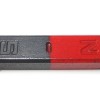What Are Magnetic Poles and How to Identify Them
All magnets have exactly two poles-a north and a south. Some scientists theorize that a magnet with one pole called a monopole is possible, but the feat has yet to be achieved. In fact, if you were to take a bar magnet and cut it in half, the two pieces would separate and form new sets of poles. In other words, no matter how many times you cut the magnet, the pieces will have a North and a South pole.
What are Magnetic Poles
The poles are the points at which the lines of magnetic flux emit and connect. They control the attraction and repulsion that is characteristic of magnetism. You may already know that Earth has a North and a South pole. However, did you know that there is a geographic north and a magnetic north? The magnetic north pole is where Earth’s magnetic field lines come to a point and connect, opposite from the south pole. Geographic poles may remain constant but the magnetic poles actually shift a little from year to year. This is an important note to remember when navigating with a compass because it aligns with the magnetic pole, not the geographic one. Like compasses, magnets align with the Earth’s magnetic poles. The north pole of a magnet seeks the magnetic north, whereas the south pole seeks the south. On the other hand, the opposite poles of magnets attract each other-north attracts south and vice versa, so remember that the Earth’s physical north pole actually acts like the south pole of a magnet.How to Identify the North and South Poles of a Magnet
You can purchase some magnets with the north and south poles indicated on them. However, some magnets may not have the poles marked, but there are a few tricks that you can use to identify what pole is which. Here is one method:Using a Compass to Identify Magnet North Pole
- Take a magnetic compass and place it close to but not touching your magnet.
- Watch carefully at where the compass needle points. The point that normally points to the north pole of Earth should point to one end of the magnet.
- That end is actually the South pole of the magnet.

